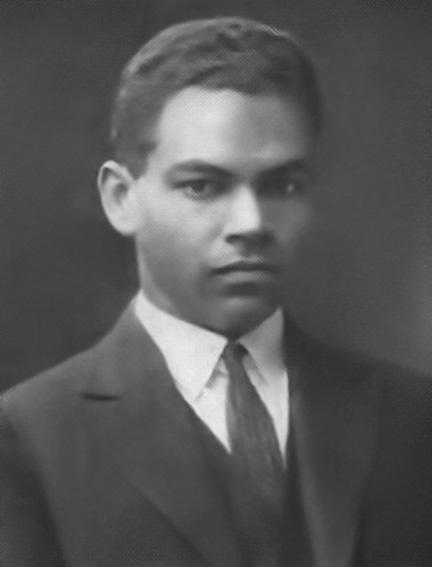James C. Evans, 1925

James C. Evans, Class of 1925
James Carmichael Evans '25, SM '26 earned a Bachelors in 1925 and Masters in 1926, both in Electrical Engineering (Course VI), from MIT. During his time at the Institute, Evans worked as an instructor, who "helped with the grading and the tutoring of the classes," according to his classmate, Gustave M. Solomons '28. The Crisis (Vol. 33, Iss 3, Jan. 1927) characterized Evans as "a brilliant young experimenter in electrical science...just out of adolescence." He graduated with honors in 1926, receiving masters degree, as well as the The William E. Harmon Award for Distinguished Achievement for research in the field of electrical engineering.
During the 1930s, Evans taught black pilots at West Virginia State College, where he served as chair of the engineering department and taught and mentored NASA “Hidden Figure” mathematician Katherine G. Johnson. Evans worked with his brother-in-law and fellow MIT graduate George L. Washington '25 to lobby the Air Corps to fund Black pilot training, which subsequently led to the training program at Tuskegee. During WWII, Evans served as a “Negro” liaison to the Secretary of War in Washington, D.C. and has been credited with helping to politically and administratively integrate the Armed Forces, while providing mentorship for Black advancement in the military. From 1943 to 1947, Evans served as Assistant Civilian Aide to the U.S. Secretary of War, continuing to serve in various capacities in the Defense Department until his retirement in 1970. Evans also taught higher mathematics and engineering at Howard University. He is the patent holder for the utilization of exhaust gases to prevent icing on aircrafts.
Relatives of Evans who graduated from MIT include his son James Carmichael (Mike) Evans, Jr. '63, SM '64, EE '67, PhD '7 in Architecture (Course 4) and grandson David Carmichael Evans '88 in Aeronautics and Astronomics (Course XVI).